Apple's 2010 MacBook Air (11 & 13 inch) Thoroughly Reviewed
by Anand Lal Shimpi on October 26, 2010 10:08 PM EST- Posted in
- Mac
- Apple
- MacBook Air
- Laptops
I remember falling in love with the original MacBook Air. It wasn’t the styling that won me over, but rather the combination of performance, form factor and battery life. I needed a notebook fast enough for me to get work done when necessary, but with long enough battery life to last me through a trip across the country. Back in 2008, the MacBook Air was the perfect solution to that problem.
The original MacBook Air had three main issues. It was hot, the 1.8” HDD was unbearably slow, and it shipped with 2GB of memory that you couldn’t expand to 4GB. It was a great machine for writers as you could open up TextEdit and hammer out a document for five hours straight. And when you needed to, you had the greater-than-Atom performance to get more intensive work done.
What prompted me to stop using the MacBook Air was the second generation unibody MacBook Pro. Apple ramped up battery capacity enough where I could get much better battery life and performance out of the MacBook Pro. The combination of the two was enough for me to let my MacBook Air collect dust. I hardly ever used it after that point.
Apple updated the MacBook Air hardware since its original release, but the updates were nothing spectacular. Apple moved from an Intel supplied chipset to one made by NVIDIA, and SSDs eventually became standard issue. Battery life didn’t get any better and memory sizes never moved beyond 2GB.
Last week Apple announced the biggest upgrade to the MacBook Air since 2008, complete with a redesign, price reduction and improved internals. Let’s start at the redesign.
There Once Was One, Now There's Two
The original MacBook Air was very light on connectivity. It had an angled MagSafe power connector but that was it for visible ports. The right side of the machine was home to three hidden connectors: mini DisplayPort, USB and line out.

The new MacBook Air (left) vs. the old MacBook Air (right)
The new design forgoes the rounded nature of its predecessor and introduces more angular surfaces toward the rear of the machine. Connectors like flat surfaces so Apple outfitted the new MacBook Air with a pair of USB ports (one on each side) in addition to the MagSafe connector, miniDP out and line out. Everything is fully accessible from the start, nothing is hidden behind any secret panels.
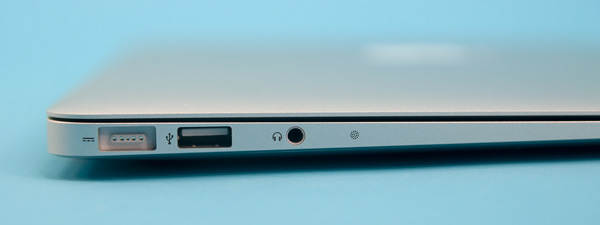
From left to right: MagSafe Power Connector, USB 2.0 port, headset jack, microphone
Next to the headset jack on the left side is the integrated microphone. Apple states it is an omnidirectional mic, but its placement is curious given the original MacBook Air had its mic at the top of the screen bezel. The microphone’s left leaning location didn’t negatively impact audio performance in our tests. As long as you’re not sitting to the right of a horribly noisy person/animal/box you should be good to go.
There are of course now two MacBook Airs that make up the family: an 11.6-inch model and a 13.3-inch model. The two have identical port layouts however the 13-inch MacBook Air gets an integrated SD card reader like its Pro siblings.
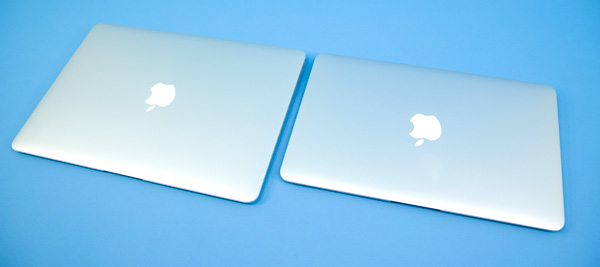
13-inch MBA (left), 11-inch MBA (right)
There’s a 0.6 pound difference between the two models and associated difference in dimensions:
| MacBook Air Size Comparison | ||||
| 11-inch | 13-inch | |||
| Height | 0.11 - 0.68" (0.3 - 1.7 cm) | 0.11 - 0.68" (0.3 - 1.7 cm) | ||
| Width | 11.8" (29.95 cm) | 12.8" (32.5 cm) | ||
| Depth | 7.56" (19.2 cm) | 8.94" (22.7 cm) | ||
| Weight | 2.3 lbs (1.06 kg) | 2.9 lbs (1.32 kg) | ||
Prices and specs differ as well. The 11-inch starts at $999 while the 13-inch starts at $1299. You can get faster CPUs in the 13-inch, while GPUs and memory options remain the same across the line. SSDs are not only standard but they're the only option for storage on the Airs. Given my infatuation with SSDs, you won't see me complaining. I'll be happy when Apple ships all of its systems with SSDs in their default configurations.
| MacBook Air Spec Comparison | |||||
| 11-inch | 13-inch |
13-inch (Late 2008)
|
|||
| CPU | Intel Core 2 Duo 1.4GHz (1.6GHz optional) | Intel Core 2 Duo 1.86GHz (2.13GHz optional) | Intel Core 2 Duo 1.86GHz | ||
| Memory | 2GB DDR3-1066 soldered on-board (4GB optional) | 2GB DDR3-1066 soldered on-board (4GB optional) | 2GB DDR3-1066 soldered on-board | ||
| GPU | NVIDIA GeForce 320M | NVIDIA GeForce 320M | NVIDIA GeForce 9400M | ||
| Storage | 64GB SSD (128GB optional) | 128GB SSD (256GB optional) | 128GB SSD | ||
| Connectivity | 802.11a/b/g/n Bluetooth 2.1 + EDR | 802.11a/b/g/n Bluetooth 2.1 + EDR | 802.11a/b/g and draft-n Bluetooth 2.1 + EDR | ||
| Battery Capacity | 35 Whr | 50 Whr | 37 Whr | ||
| Dimensions |
11.8 " x 7.56 " x 0.11 - 0.68" (29.95 cm x 19.2 cm x 0.3 - 1.7 cm) |
12.8 " x 8.94 " x 0.11 - 0.68" (32.5 cm x 22.7 cm x 0.3 - 1.7 cm) |
12.8 " x 8.94 " x 0.16 - 0.76" (32.5 cm x 22.7 cm x 0.41 - 1.9 cm) |
||
| Weight | 2.3 lbs (1.06 kg) | 2.9 lbs (1.32 kg) | 3.0 lbs (1.36 kg) | ||
| Price | $999 | $1299 | $1799 | ||
Memory & CPU Upgrades: Good News and Bad News
I always like hearing the bad news first so I’ll treat you all no differently. The new MacBook Air not only comes with a meager 2GB of memory, but it’s also soldered onto the motherboard just like in the previous generations.
Now the good news: after two years of complaining Apple has finally added a 4GB memory option. It’s not end user upgradeable, but for an extra $100 Apple will solder 4GB of memory onto the MacBook Air’s motherboard instead of 2GB.
If you’re really just going to be using this thing for writing, IMing and browsing the web - 2GB is fine. If you plan on doing more than that, you should consider spending the $100 on the 4GB upgrade. Right now I’m using 1.46GB of memory. I can edit only a handful of photos in Photoshop before I start swapping to disk.
Apple priced CPU upgrades similarly, but there’s a catch. The base $999 and $1299 (11/13-inch) MacBook Airs can’t be the recipient of an upgraded CPU. You have to go to the upgraded 11/13-inch configurations, which are both $200 more expensive before you get the option to upgrade the CPU for another $100. The upgraded models just give you larger SSDs and nothing else, so if you don’t need the space then the seemingly affordable $100 CPU upgrade actually ends up being a $300 upgrade.
If you want my advice I’d stick to the base systems so long as your needs are simple. However if you plan on doing any amount of multitasking or heavy work (e.g. content creation, editing) on this machine I’d recommend at least the $100 memory upgrade to 4GB. And if you plan on keeping the MacBook Air for a while, spring for the upgraded CPU. It’ll make the later years of its life a little more bearable.
The Trackpad
Going back to my old MacBook Air was always weird. It lacked the glass trackpad that I’d grown accustomed to. The trackpad just felt rough. The new Airs move to the same type of glass trackpad as the rest of Apple’s mobile lineup. Also gone is the traditional mouse button, the glass trackpad pivots at the top so the entire surface acts as a mouse button.
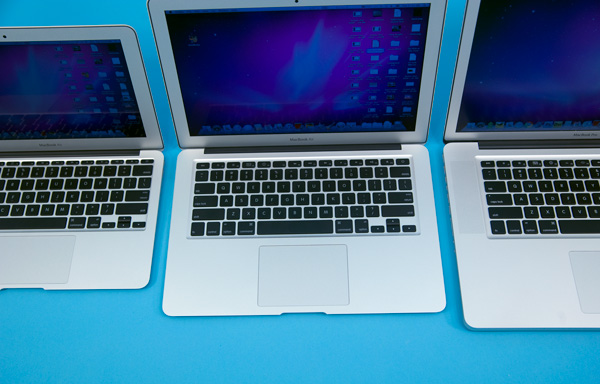
From left to right: 11-inch MBA, 13-inch MBA, 15-inch MBP
Multitouch gestures are supported by the glass trackpad.
No Optical Drive, OS X Recovery via USB Stick
The original MacBook Air didn’t have an optical drive. The new models are no different. When I bought my first Air I actually purchased the external SuperDrive, thinking I’d use it. To be honest, I’ve only used it when doing weird things to the MacBook Air for reviews on AnandTech. I won’t go as far as to say that no notebooks need optical drives, but the absence of one in the MacBook Air isn’t that big of a deal.
Unlike the original MacBook Air, Apple doesn’t bundle these two puppies with recovery DVDs. In case you get an 8GB USB stick with OS X and all bundled apps on the drive. If you need to restore your machine, pop the USB stick in and hold down the ‘c’ key while you start the Air. Apple was even kind enough to etch the version of the OS and application suite on the USB stick itself in case you accumulate a bunch of these over time.
I must say this is the ideal way to distribute OS X recovery software. The USB stick isn’t write protected so you could always do something silly like erase it, but I’m willing to take that risk for the convenience benefit. I expect that next year’s MacBook releases may bundle a similar stick if Apple is feeling particularly forward looking.
No Backlit Keyboard, No Ambient Light Sensor, Same Old Power Brick
Neither of the new MacBook Airs have a backlit keyboard. I do a lot of writing in bed at night and I do miss the backlit keyboard. For touch typists it’s not a problem, but if you switch between the MacBook Air and other computers regularly you’ll find yourself fumbling for the function keys in the dark. I'm guessing this was a cost savings measure.
The top of the screen bezel only has a cutout for the VGA camera, there’s no ambient light sensor. That means you don’t get auto adjusting screen brightness (which some may consider a good thing).
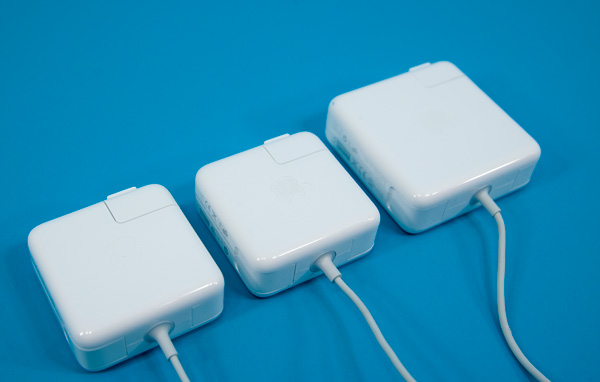
From left to right: new MBA power adapter, old 2008 MBA power adapter, 2010 MBP power adapter
Both Airs come with the same 45W MagSafe power adapter, which just happens to be the same power adapter as the old 2008 MBA (with a new connector of course):
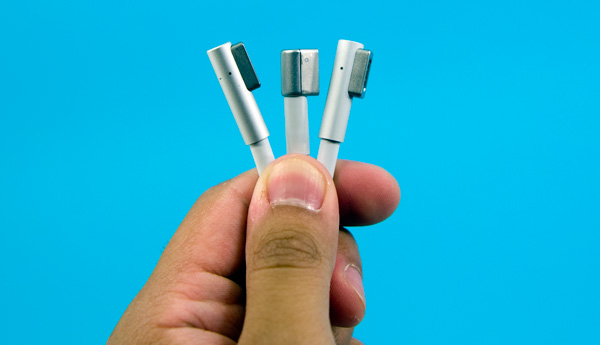
From left to right: 15-inch MBP power connector, 2008 MBA power connector, 2010 MBA power connector
No Flash Installed by Default
So this is weird. The new MacBook Airs are the first Macs to ship in a long time without Adobe's Flash Player plugin installed by default. That's right, if you open your brand new Mac, launch Safari, visit youtube.com and try to watch a video you'll get this screen:

Apple encourages its users to go download the latest version of Adobe's Flash Player to enable the functionality, but this flies in the face of Apple's "it just works" usage model. Watching flash video no longer just works on Macs. You have to go out and download something to make it work. It sounds awfully PC like (gasp!).
Obviously Apple isn't the biggest fan of Flash. The technology isn't supported (and most likely never will be) on iOS. Removing it from the default OS X install makes Apple's intentions clear: it wants Flash dead.
There's also the security aspect. Apple wants to keep its OS as secure as possible and Flash vulnerabilities have been a problem in the past. By not shipping OS X with Flash on it, Apple avoids shipping an old, out of date and potentially vulnerable version of the player software on its Macs. And by forcing users to download the latest version they'll hopefully have a more secure copy on their Macs.
Now whether or not this next bit is a coincidence I'm unsure of. Two of our battery life tests involve loading web pages with Flash on them. My 13-inch MBA sample would throw this error almost every 60 minutes on the dot during the test:

The issue didn't happen on the 11-inch MBA, nor on any of the other MBPs I've run the battery tests on. I've looked around and can't seem to find other reports of Flash being unusually unstable on the new MBAs so it's quite possible that this is an isolated (but unusually repeatable) problem. I've alerted Apple and I'm trying to see if they can reproduce it on any other hardware aside from my 13-inch model. What bothers me is that the the error is very reproducible. I'm going to keep pounding on the system to see if I can figure out what's going on. If I find anything, rest assured I'll publish it here.


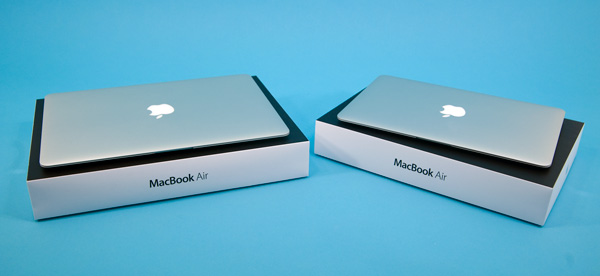
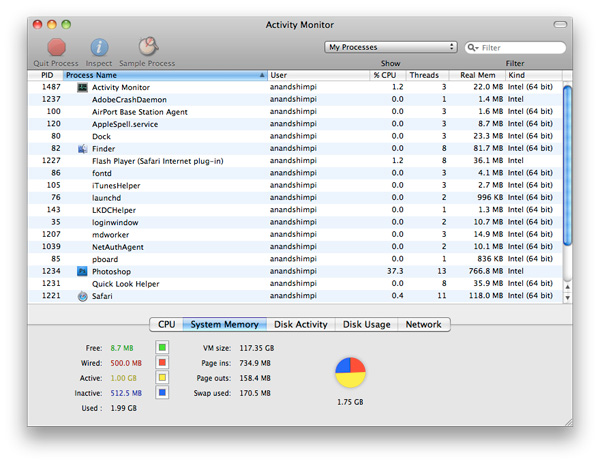
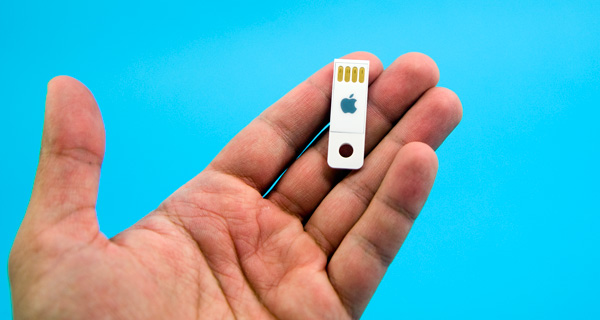
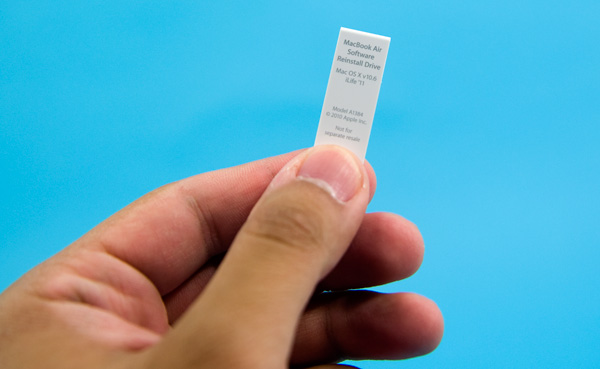
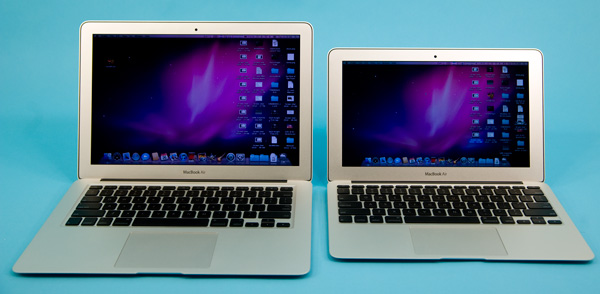








185 Comments
View All Comments
cabjf - Tuesday, October 26, 2010 - link
The fact that the iPad will easily sync with your main computer does give it one advantage over the Air. If Apple produced some type of easy to use syncing software so that you could use the Air as a portable version of your main computer's contents, it would be the perfect road companion to an iMac, Mac Pro, or even a 17-inch Macbook Pro. Perhaps that is the way they are moving in bringing an App Store and other iOS features to Mac OS X. Maybe that's part of the intended use for that huge data center they are building (and already considering expanding).wintermute000 - Wednesday, October 27, 2010 - link
" If Apple produced some type of easy to use syncing software so that you could use the Air as a portable version of your main computer's contents, it would be the perfect road companion to an iMac, Mac Pro, or even a 17-inch Macbook Pro."Easily done with a bit of work
- know where the files are and don't do things like let itunes sort folders
- rsync or any decent gui backup/sync software
storage is an issue but for work purposes 64Gb is enough to handle it
for streaming media use streaming media solutions.
psonice - Wednesday, October 27, 2010 - link
Apple sell 'mobile me' which pretty much does this. It gives you an 'iDisk' in the cloud, accessible from any of your machines (think it supports windows too?), plus there's an iphone app to access it. It also syncs your bookmarks, preferences, dock icons (don't think it syncs the actual apps though) and keychain (for passwords). There's push email + web hosting (main thing I use it for) and other bits too.It's $60/year, and it's possible to get pretty much everything for free elsewhere. But like a log of apple stuff, it works well, it's nicely integrated, and if you have the money it's not worth arsing around with the others.
Tmoz - Wednesday, October 27, 2010 - link
You could use Dropbox to do this: http://db.tt/eiXQTsi (Disclosure: Referral link)It syncs your files to Amazon S3 and then to any computers you have the software installed on (Mac/Windows/Linux are supported)
dendysutrisna - Friday, August 12, 2011 - link
Yes I understand, since this article was made when Apple's MacBook Air which has been reinforced Intel Core i5 has not come out. MacBook Air the latest generation, which has been paired with Mac OS X Lion, there is a AirDrop feature, where you can share with computer around you which in one network, even with the computer windows though. Try to look http://www.bestdealscomputers.net/netbooks/apple-m... I've made a little review about the newest MacBook Air, you might want to find out more.quiksilvr - Tuesday, October 26, 2010 - link
Seriously, their pricing scheme makes absolutely no sense. I have attempted to see what COULD be the decent price point, but a few points have to be made:1) The Macbook 13 (the white one) simply needs to die.
2) They are now hitting 4 different screen sizes, and IMO they should stick to three and make things easier (as should other PC makers)
1) 12" screen (not 11.6", 12") for the netbook market
2) 14" screen for the general market
3) 16" screen for the heavy multimedia and desktop replacement market
3) Get rid of the "Pro" terminology. Simply have it Macbook 12, 14, 16 and Air versions of these models (Macbook Air 12, etc.)
4) STOP forcing customers to get the "upgraded" version just so that we can upgrade the CPU. This is annoying and very Dell like and customers don't like it.
martyrant - Tuesday, October 26, 2010 - link
Apple has needed a price overhaul since the company's inception.Glad you are only now realizing.
darwinosx - Tuesday, November 2, 2010 - link
You are just too dumb to understand that similar quality, service, and a modern OS from other companies is as much or more than Apple products. Except they don't have a modern OS.quiksilvr - Tuesday, October 26, 2010 - link
Okay, here is my attempt (and I know this will never happen because it makes too much sense)Macbook Air 12: $799
Macbook 12: $599
Macbook Air 14: $999
Macbook 14: $799
Macbook Air 16: $1199
Macbook 16: $999
And as shocking as this may seem to Mac users, this is still a major premium over PCs.
Macbook Air Baseline:
-Core i3 LV (or ULV) with Core i5/i7 LV/ULV option (add thickness if necessary)
-Integrated Intel HD chip and dedicated nVidia card with Optimus
-SSD (I would say start it at 90GB and work your way up)
-USB 3.0 all the way
-mini Displayport with choice of adaptor included (DVI, VGA, HDMI, Displayport, etc.)
-Wireless, Bluetooth, yada yada
-4 GB RAM
-No Optical
-And one thing I just noticed, put an actual microphone PORT and put a stereo microphone next to the webcam
-Expresscard Slot option
Macbook Baseline:
-Core i3 with Core i5/i7 option (add thickness if necessary)
-Integrated Intel HD chip and dedicated nVidia card with Optimus
-HDD with SSD option (start HDD with 250GB)
-USB 3.0
-mini Displayport with choice of adaptor included (DVI, VGA, HDMI, Displayport, etc.)
-Wireless, Bluetooth, yada yada
-4 GB RAM
-DVD Burner with Blu Ray Player/Blu Ray Burner option
-Expresscard Slot option
5) And for the love of god, stop making these screens epic glossy. This is a message to ALL PC makers! Make it half and half or give a realistically priced matte option (FREE)
solipsism - Tuesday, October 26, 2010 - link
Nothing you wrote makes sense.How much is the ULV CPU from Intel?
How much is the LV CPu from Intel?
How much is that Nvidia 320M?
How much does it cost to mill an aluminum case?
How much are 9.5mm ultra-slim slot-loading BRDs?
Can you find any for sale?
Which Core-i3 LV and ULV chips will they use?
Which USB3.0 controller will they use, how much will cost, where will go in the Airs?
Where will this ExpressCard slot go?
Why scrape the 11, 13 and 15” Mac notebooks for 12, 14 and 16” displays?
Why didn’t you fail to address the size, weight, or quality of anything? You just took a price that you compared to other vendors, bumped it slightly and then added a whole mess of features without considering engineering, costs, or anything else. You might as well add include TARDIS technology to fit all that in there and/or use a TARDIS to go into the future to a time when all that is actually possible, but instead you just sound like a TARD in your self proclaimed “makes too much sense” post.